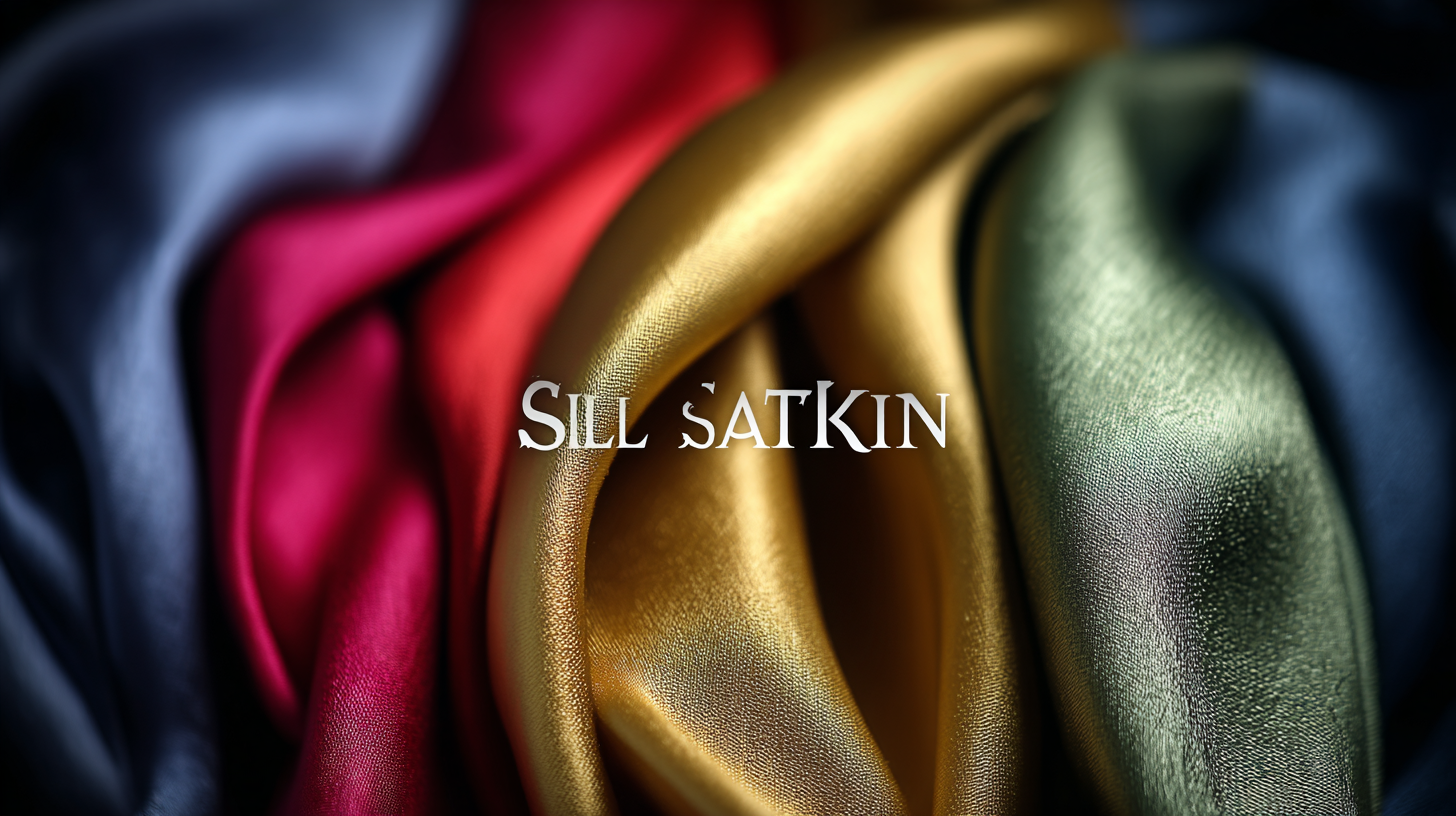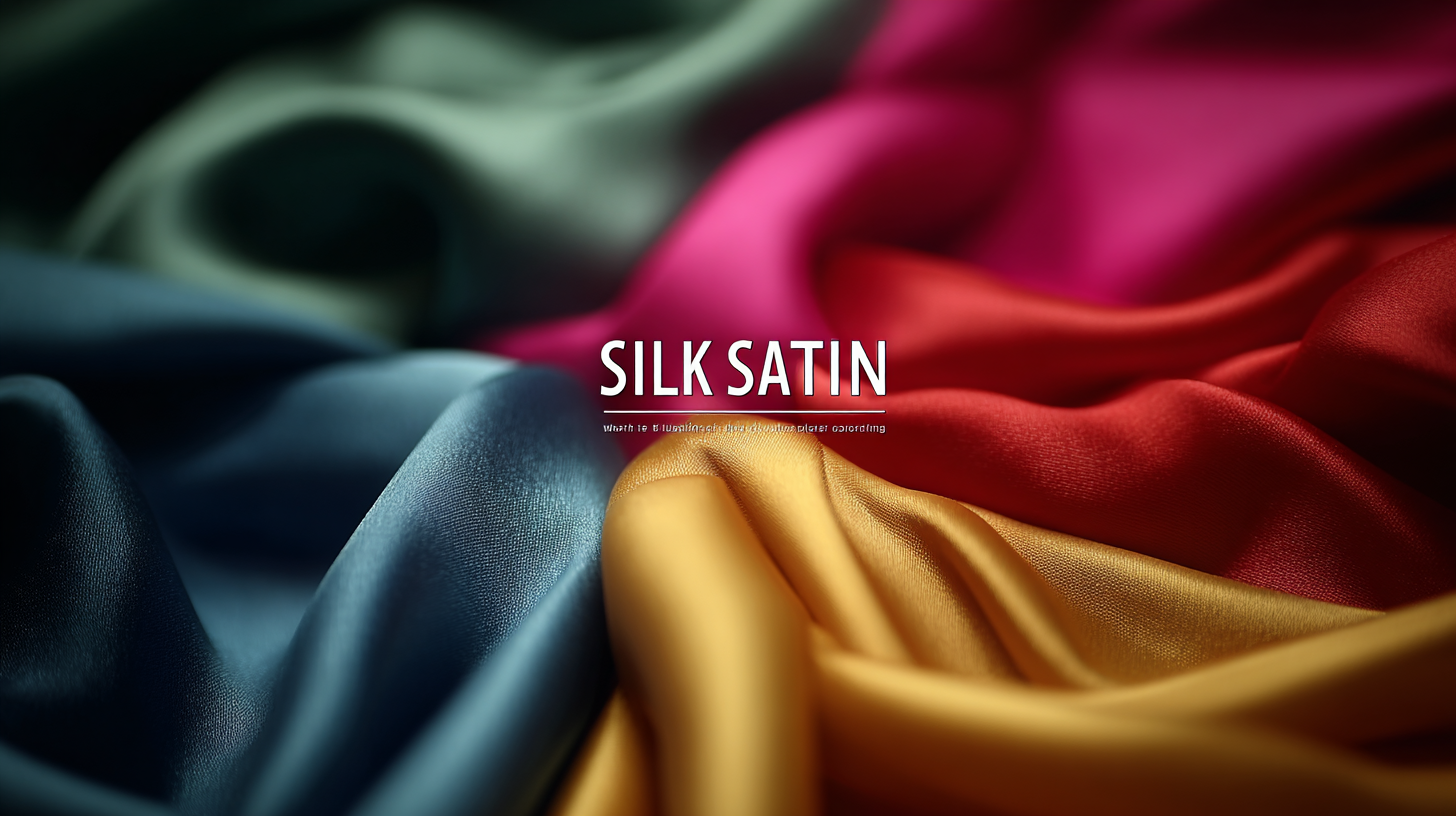In the ever-evolving textile industry, the demand for high-quality materials like Silk Satin Fabric continues to rise. According to a recent market analysis projected for 2025, the global fabric market is expected to reach approximately USD 1 trillion, with silk fabrics accounting for a significant share due to their luxurious feel and versatility. The growing consumer preference for sustainable and ethically sourced materials further elevates the importance of sourcing the right Silk Satin Fabric. For manufacturers and retailers alike, understanding the various types and grades of silk, as well as their applications across different sectors, is crucial. As we explore the intricacies of selecting the best Silk Satin Fabric for your global sourcing needs, we will delve into key considerations, market trends, and real-world examples that can guide informed decision-making in this competitive landscape.

When choosing the best silk satin fabric for your sourcing needs, it’s essential to understand the unique characteristics and qualities that set silk satin apart. Silk satin is known for its luxurious sheen and soft texture, making it a popular choice for garments like shirts and pajamas. Notably, the fabric drapes beautifully, giving garments a flattering silhouette. According to industry reports, silk satin has shown a 15% growth in adoption in the luxury fashion market over the past year, highlighting its increasing popularity among consumers seeking stylish and comfortable options.
When selecting silk satin, consider the fabric's weight and finish. A heavier satin typically offers more structure, making it ideal for tailored pieces, while lighter satin can enhance the fluidity of garments like flowy dresses or soft pajama sets. Additionally, pay attention to the weave; a high thread count often indicates superior quality. For instance, opt for a satin that features a 300-thread count or more for a softer and more durable fabric.
**Tips:**
1. Always request swatches before committing to a bulk purchase to ensure the texture and sheen meet your expectations.
2. Check for certifications that guarantee the fabric's authenticity and ethical sourcing, as consumers are increasingly favoring responsible fashion choices.

When considering silk satin fabrics for global sourcing needs, it is essential to understand the various types available and how they can fit specific applications. The primary types include charmeuse, duchess, and silk satin blend. Charmeuse is known for its luxurious drape and glossy surface, making it ideal for evening wear and high-end garments. According to a 2023 textile market analysis, the demand for charmeuse silk has seen a 15% increase due to its popularity in luxury fashion, emphasizing the importance of selecting the right type for your target market.

Duchess satin, on the other hand, is heavier and has a more structured feel, commonly used in formal wear and upholstery. This fabric offers a sophisticated finish and is often preferred for wedding dresses and high-fashion designs. A recent report from the International Textile Association noted that duchess satin's market share grew by 12% last year, indicating a robust interest in structured fabrics for elegant apparel. Meanwhile, silk satin blends, which combine silk with synthetic fibers, provide a cost-effective alternative while still retaining some luxurious properties. These variations cater to diverse consumer preferences and price points, enabling businesses to align their product offerings with market trends effectively.
When considering silk satin for your global sourcing needs, it's essential to evaluate the numerous benefits it offers in terms of efficiency and quality. Silk satin not only presents a luxurious feel and aesthetic appeal but also promises durability and versatility in various applications. Sourcing high-quality silk satin can streamline production processes, catering to diverse markets while maintaining a competitive edge.
**Tip:** When selecting a silk satin supplier, ensure they provide transparent sourcing practices. This not only guarantees the authenticity of the fabric but also supports sustainability and ethical manufacturing standards, enhancing your brand reputation.
Furthermore, investing in silk satin can result in significant cost savings in the long run. Its longevity and timeless quality mean that products made from silk satin often require less frequent replacement, making them a wise investment for retailers and manufacturers alike.
**Tip:** Conduct thorough market research to identify trends in silk satin applications. By understanding consumer preferences and behaviors, you can tailor your product offerings to meet market demands, improving sales potential while fostering a stronger connection with your audience.
| Criteria | Details | Benefits | Considerations |
|---|---|---|---|
| Fabric Weight | Lightweight (8-12 mm) | Ideal for draping and flow, suitable for garments | May be prone to wrinkling |
| Weave Type | Satin Weave | Luxurious shine and smooth texture | Can be slippery to work with |
| Composition | 100% Silk or Silk Blend | Natural fiber, breathable, and comfortable | Higher cost for 100% silk fabrics |
| Color Fastness | Reactive Dyeing Process | Vibrant and lasting colors | Test required for fade resistance |
| Care Instructions | Dry Clean Recommended | Maintains quality and longevity | Not machine washable |
When sourcing silk satin fabric globally,
cost-effectiveness is a critical factor that must be balanced with quality.
According to a report by Market Research Future, the global silk market
is expected to grow at a CAGR of 8% from 2022 to 2027, driven by
rising demand for luxury fabrics. Although silk satin offers a luxurious feel
and superior drape, it’s essential to consider the price fluctuations in raw silk—
often influenced by factors such as weather conditions affecting mulberry crops and
changes in labor costs in major producing countries like China
and India.
A recent statistic from Textiles Intelligence
highlights that the average price of silk fabric increased by approximately
15% over the past year, reinforcing the
importance of strategic sourcing. Buyers can mitigate costs by exploring a blend
of silk with synthetic fibers, maintaining the sumptuous look and handfeel while
reducing the overall price. Moreover, sourcing directly from manufacturers can
offer better pricing structures, as intermediaries often inflate costs.
Therefore, understanding these dynamics is crucial in making informed decisions
that uphold both quality and budget requirements in silk satin fabric sourcing.
Sustainable sourcing has become a crucial aspect of the textile industry, particularly in the world of silk satin fabric. As consumers grow more environmentally conscious, brands are responding by innovating sustainable options. The sustainable fashion industry is projected to expand at a compound annual growth rate of 9.1 percent, highlighting the increasing demand for eco-friendly products. This shift provides an opportunity for global sourcing needs to align with sustainable practices, ensuring that choices in silk satin are not only luxurious but also environmentally responsible.
One noteworthy trend is the emergence of alternatives to traditional silk. Innovative brands are introducing eco-friendly vegan silk pillowcases and OEKO-TEX certified silk products, catering to consumers who prioritize safety and sustainability. These advancements reflect a broader movement in the fashion industry where stylists and eco-experts are recommending sustainable choices, such as fabrics derived from biosequins and mango leather. By prioritizing sustainable silk satin options, businesses can enhance their offerings while contributing positively to the environment, ensuring their place in the future of eco-conscious fashion.
